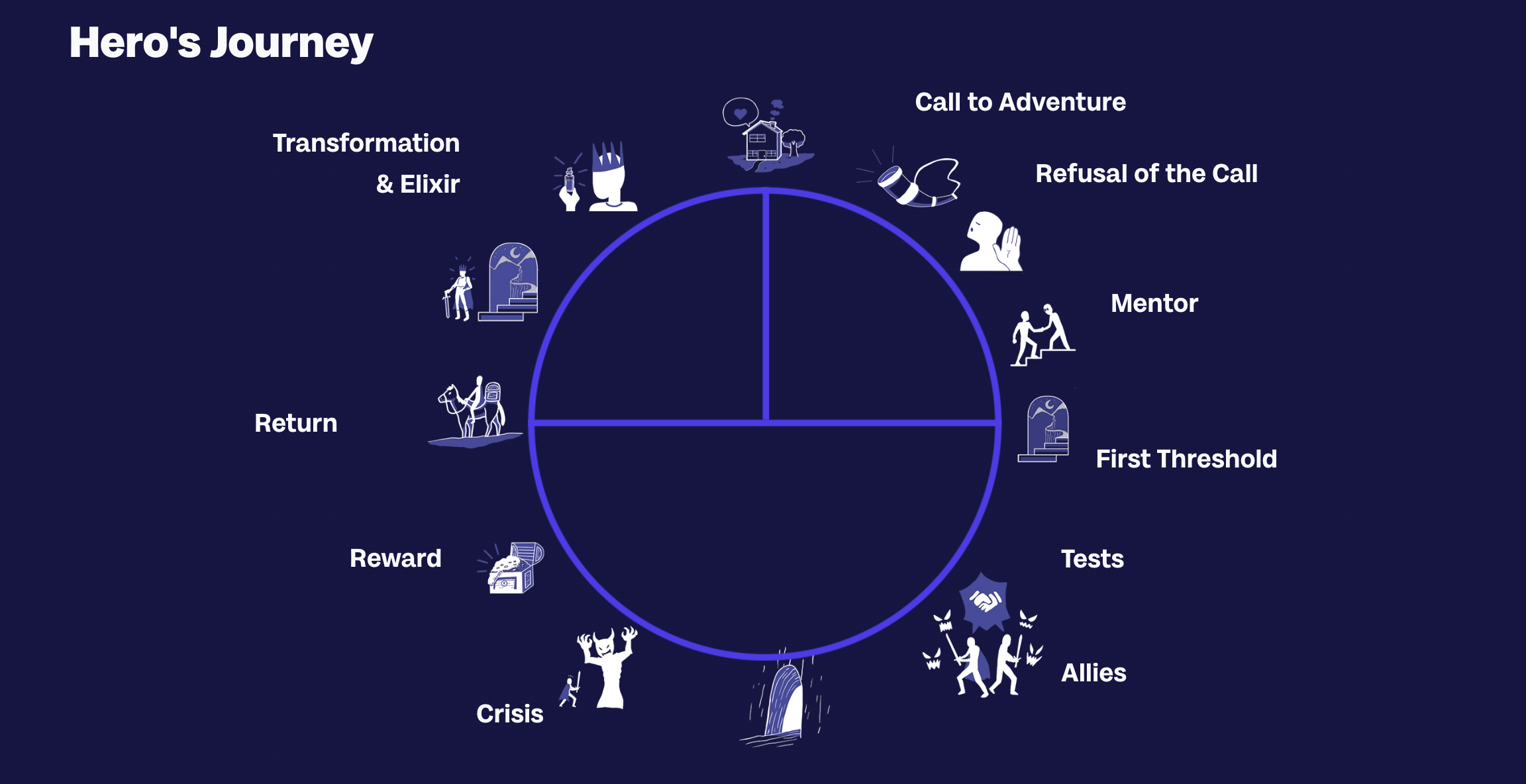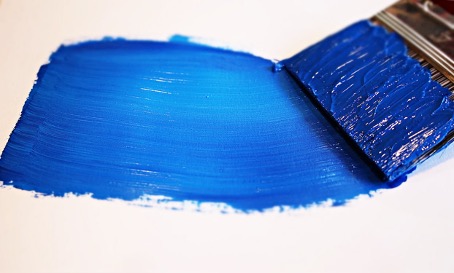Haribo turns 100! The Gold Bears’ Hero’s Journey
Kids and grown-ups love it so – the happy world of Haribo. Most of us associate this phrase with one thing above all: childhood. Whether in a school cone or for birthdays – the Gold Bears were always there. The Haribo man, Thomas Gottschalk, with his broad smile and golden curls, is a childhood hero for many and an ambassador for Haribo. This year, the popular Gold Bears turn 100 years old. You can discover the successes, trials and setbacks that have made the internationally renowned confectionery company what it is today in “Haribo’s Hero’s Journey”.
In the 1940s, the American researcher of comparative mythology, Joseph Campbell, discovered that famous human stories and myths follow a certain pattern – the hero’s journey. Whether Harry Potter, The Lion King, hundreds of song lyrics and campaigns – successful storytelling formats are based on this very model. To tell Haribo’s brand story, we use Christopher Vogler’s simplified and modernized version.

… Once Upon a Time, a long Time ago, in a Small Town near Bonn …
The Ordinary World: Johannes “Hans” Riegel, inventor of the world-famous Gold Bears, was born on April 3, 1893 in Friesdorf near Bonn. After completing his school education, he worked as an unskilled worker in the Kleutgen & Meier liquorice factory in Godesberg.
The Call to Adventure: Contrary to his father’s wishes to train in the construction sector, the talented and adventurous Hans Riegel began his training as a candy maker. With his degree under his belt, he left his home in Bonn and started work in a sweet factory in Neuss around 1912/1913, moving to Osnabrück a year later.
Refusal: In 1914, the First World War forced him to interrupt his craft. First as a messenger and later as a non-commissioned officer, Hans Riegel, at the age of 20 at the time, fought his way through the war. Find out more about the hero’s journey in: Storytelling for companies
Find out more about the hero’s journey in: Storytelling for companies
Obstacles, Trials and Friends
First threshold: After the First World War, he resumed his work as a candy maker and became a partner in the Heinen company, which subsequently changed its name to Heinen & Riegel. However, just two years later, at the age of 27, he went into self-employment on December 13, 1920. His starting assets consisted of a bag of sugar, a marble slab, a stool, a stove, a copper kettle and a roller. In 1921, he registered his company under the name “Ha(ns) Ri(egel) Bo(nn)” = Haribo.
Allies: Shortly afterwards, he married Gertrud Vianden, who became the first employee of the small company and delivered the Haribos by bicycle.
Tests: In 1922, Hans Riegel invents the bear figure made of fruit gum, the so-called “dancing bear”, which is modeled on dancing bears at fairs. 100 years later, it’s hard to imagine, but in the 1920s dancing bears were part of the regular entertainment program. In 1923, Haribo invests in the first company car due to the growing interest of customers and introduces licorice products into production three years later. These become an absolute bestseller. These include the licorice sticks and the famous licorice snail. In the 1930s, Haribo was already advertising with the slogan “Kids and grown-ups love it so – the happy world of Haribo.” The Ordeal: Haribo grew steadily until the Second World War and became an important employer in Bonn. However, the political and economic consequences of the war did not leave the confectionery manufacturer unscathed. Due to the shortage of raw materials and falling demand, the number of employees fell from 400 to 30. In addition, the company suffered its greatest loss on March 31, 1945, shortly before the end of the war, with the death of company founder Hans Riegel. His wife Gertrud initially took over the business.… but the Hero’s Journey continues …
The Reward / The Return: Like a phoenix from the ashes, the sons Paul Riegel and Hans Riegel Junior rebuilt their father’s business after returning from captivity as prisoners of war. By 1950, the company had already grown to 1,000 employees.
Transformation: In 1960, the “Dancing Bears” are transformed into the world-famous “Gold Bears”. The brothers recognize the importance of marketing early on and start advertising in the new medium of television. In the mid-1960s, the slogan “Kids love it so” is supplemented by “and grown-ups”.
Elixir: From then on, Haribo’s story continued to go upwards. In 1967, the Gold Bears were recognized as an official trademark, in the 1990s the company gained Thomas Gottschalk as an advertising icon, in 1996 Haribo took over the Belgian marshmallow company Dulcia and in 2007 celebrated its 85th birthday.Golden Curls and Gold Bears
But this is not the end of Haribo’s hero’s journey. Even as one of the largest confectionery companies in the world, Haribo experiences new setbacks, trials and has to fight its way back. The founder’s sons, Paul and Hans Riegel, passed away in 2009 and 2013. Both worked in the family business until the end of their lives. 2014 was also a fateful year, as marketing figure, Thomas Gottschalk and his golden mane, left the Gold Bears. The “Wetten, dass…?” presenter has been shooting advertising campaigns with Haribo for 24 years and has even secured himself an entry in the Guinness Book of Records for the longest advertising partnership.
Bully Herbig came to Haribo as his successor, but the romance did not last long. In addition, the confectionery company tried to jump on the health trend and focused on gelatine-free and sugar-reduced products. However, the strategy was less successful and cost Haribo a drop in sales of almost ten percent. All of us love sweets. Whether it’s a birthday, a school opening or a snack time – Haribo is part of it. At times like this, we simply don’t care about the sugar content. Haribos management also recognized this. The company still offers healthier alternatives, but the focus is once again on the popular Gold Bears.
Since 2019, the company has been advertising without comedians and instead with non-celebrity adults. In the “Kids Voice” spots, suits, librarians and ice hockey players become children as soon as they see the Gold Bears. Haribo thereby reminds us of its claim to “make adults happy too” and the commercials are not only a success in Germany, but worldwide. To mark the anniversary year, the Gold Bears are being honored with emotional commercials with the motto: “100 years of joy together”. The message behind it: Haribo wants to preserve the joy of childhood into old age and connect generations. So we can be excited to see how Haribo’s hero’s journey continues, because like all great books or films, there will be a sequel.
Are you interested in other hero’s journeys? Then read about how LEGO’s hero’s journey led to the Olympus of storytelling or how Adidas became a brand giant.Share this article
Related articles

11 January 2024








